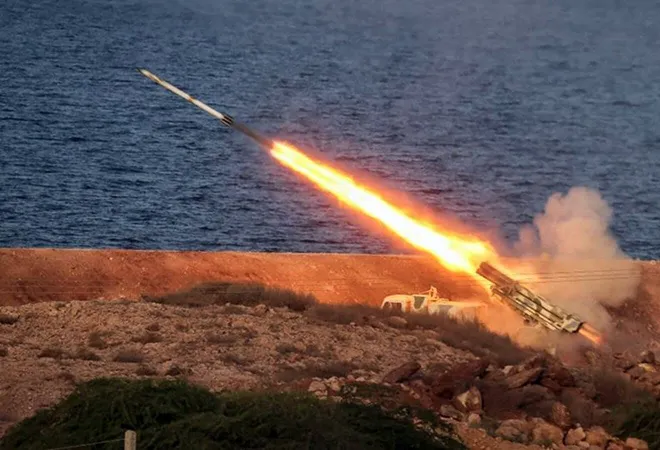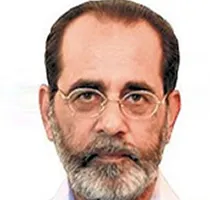Mixed signals emerging in 2022 reflect the challenge in dealing with rising nuclear risks in an increasingly polarised world. On the face of it, the January 3 joint statement by leaders of the five nuclear-weapon States (China, France, Russia, the United Kingdom, and the United States) on preventing nuclear war and avoiding arms races should have been a matter of global relief. However, statements and actions by the US, Russian, and Chinese leaders indicate growing tensions and the beginnings of a new nuclear arms race with rapidly receding prospects of any arms control, writes Rakesh Sood, former diplomat and currently distinguished fellow, Observer Research Foundation. The statement reiterated the declaration made by presidents Ronald Reagan and Mikhail Gorbachev in 1985 that “a nuclear war cannot be won and must never be fought” and underlined that nuclear weapons “serve defensive purposes”.
Mixed signals emerging in 2022 reflect the challenge in dealing with rising nuclear risks in an increasingly polarised world. On the face of it, the January 3 joint statement by leaders of the five nuclear weapon States (China, France, Russia, the United Kingdom, and the United States) on preventing nuclear war and avoiding arms races should have been a matter of global relief. However, statements and actions by the US, Russian, and Chinese leaders indicate growing tensions and the beginnings of a new nuclear arms race with rapidly receding prospects of any arms control.
The statement reiterated the declaration made by presidents Ronald Reagan and Mikhail Gorbachev in 1985 that “a nuclear war cannot be won and must never be fought” and underlined that nuclear weapons “serve defensive purposes”. The five leaders also committed to create a security environment “more conducive to progress on disarmament with the ultimate goal of a world without nuclear weapons.”
The statement reiterated the declaration made by presidents Ronald Reagan and Mikhail Gorbachev in 1985 that “a nuclear war cannot be won and must never be fought” and underlined that nuclear weapons “serve defensive purposes”.
Yet, the message failed to convey a sense of commitment to nuclear disarmament. First, four other states possessing nuclear weapons (India, Israel, North Korea, and Pakistan) were missing because they hadn’t been invited to join. Second, the statement was a collection of pious homilies, at odds with ground reality.
The statement was intended for the 10th review conference of the Nuclear Non-Proliferation Treaty (NPT) and only the five are party to the NPT; the other four are not because of a quirky arbitrariness that the NPT only recognises a nuclear-weapon State if it exploded a bomb before January 1, 1967. The conference was postponed thrice and scheduled to begin on January 4, but Omicron intervened. The statement was negotiated by diplomats and released as planned.
The following day, reality intervened rudely as Chinese President Xi Jinping signed off on the annual mobilisation order for the military for 2022, instructing “the armed forces to closely follow the evolution of technology, warfare and rivals, better combine training with combat operations, to develop an elite force capable of fighting and winning wars.” Simultaneously, China declared that it will continue to modernise its nuclear arsenal while urging the US and Russia to reduce their stockpiles.
It is true that Russia and the US have about 6,000 weapons each compared to China’s modest arsenal estimated at 350 warheads. However, from satellite imagery of at least four new missile storage sites, testing of a hypersonic glide vehicle capable of fractional orbital bombardment and larger intercontinental ballistic missiles (ICBMs) and submarine-launched ballistic missiles (SLBMs), the Chinese arsenal is expected to double by 2027 and treble by 2030.
China declared that it will continue to modernise its nuclear arsenal while urging the US and Russia to reduce their stockpiles.
Russia, too, has been modernising its nuclear arsenal for a decade. New ICBMs, Topol and Yars, are being deployed and Sarmat, capable of going over the South Pole evading US missile defences, has been tested. Russia has also deployed a hypersonic missile, Zircon, is in the process of deploying a hypersonic glide vehicle, Avangard, and testing a nuclear-powered torpedo to be used by underwater drones. Russia has maintained a stockpile of non-strategic nuclear weapons (2,000-4,000 bombs), giving rise to apprehensions about early use in a conflict.
The last US Nuclear Posture Review in 2018 announced a significant shift by recommending an increase in the types of weapons in the arsenal and their potential role, reflecting new strategic rivalries. The review retreated from an earlier goal of seeking to limit the role of nuclear weapons to the sole purpose of deterring nuclear attacks; and instead, widened it to hedge against the emergence of nuclear and non-nuclear strategic threats and to prevail against both nuclear and non-nuclear strategic attacks.
For this, the US is developing more flexible and tailored nuclear options, including low-yield weapons.
Ahead of the US-Russia Strategic Stability Dialogue that began this week in Geneva, Russia presented two parallel draft texts, to the US and the North Atlantic Treaty Organization (NATO), aimed at ensuring legally binding security guarantees. Shifting the focus away from Ukraine, Russia is demanding an undertaking about no eastward expansion of NATO, withdrawal of US nuclear forces from Europe, and restricting NATO forces to 1997 boundaries.
Ahead of the US-Russia Strategic Stability Dialogue that began this week in Geneva, Russia presented two parallel draft texts, to the US and the North Atlantic Treaty Organization (NATO), aimed at ensuring legally binding security guarantees.
This has sent reverberations through Europe, making the 14 east European and Baltic States more eager to cling to the US nuclear umbrella. Meanwhile, US warships continue exercises in the western Pacific, undertaking more Freedom of Navigation Operations through the South China Sea even as Chinese aircraft violate the Taiwan air defence identification zone (ADIZ) with growing impunity. The announcement of AUKUS, with the US and the UK joining hands to provide nuclear-powered submarines to Australia, a non-nuclear-weapon State party to the NPT, is directed at China’s increasingly assertive behaviour.
This reality is not lost on the other parties to the NPT and this is why 86 of them have signed on to the Treaty on the Prohibition of Nuclear Weapons (TPNW) that came into force in January 2021. These countries are concerned about growing nuclear risks and unhappy that the NPT’s five nuclear powers have not undertaken any steps to reduce the role of nuclear weapons. The nuclear powers like to pretend that the TPNW doesn’t exist, setting the scene for a contentious conference whenever it takes place.
NPT is not the only arms control treaty under strain. The Anti-Ballistic Missile Treaty and the IntermediateRange Nuclear Forces Treaty between the US and Russia are already history. Both countries have exited from the Open Skies Treaty. The Comprehensive Nuclear Test Ban Treaty (CTBT) has not come into force after 25 years.
The real reason is that the old arms control model was a product of the Cold War, reflecting a bipolar world. The challenge now is to create an arms control model that reflects the reality of today’s multipolar world.
This commentary originally appeared in Hindustan Times.
The views expressed above belong to the author(s). ORF research and analyses now available on Telegram! Click here to access our curated content — blogs, longforms and interviews.




 PREV
PREV


